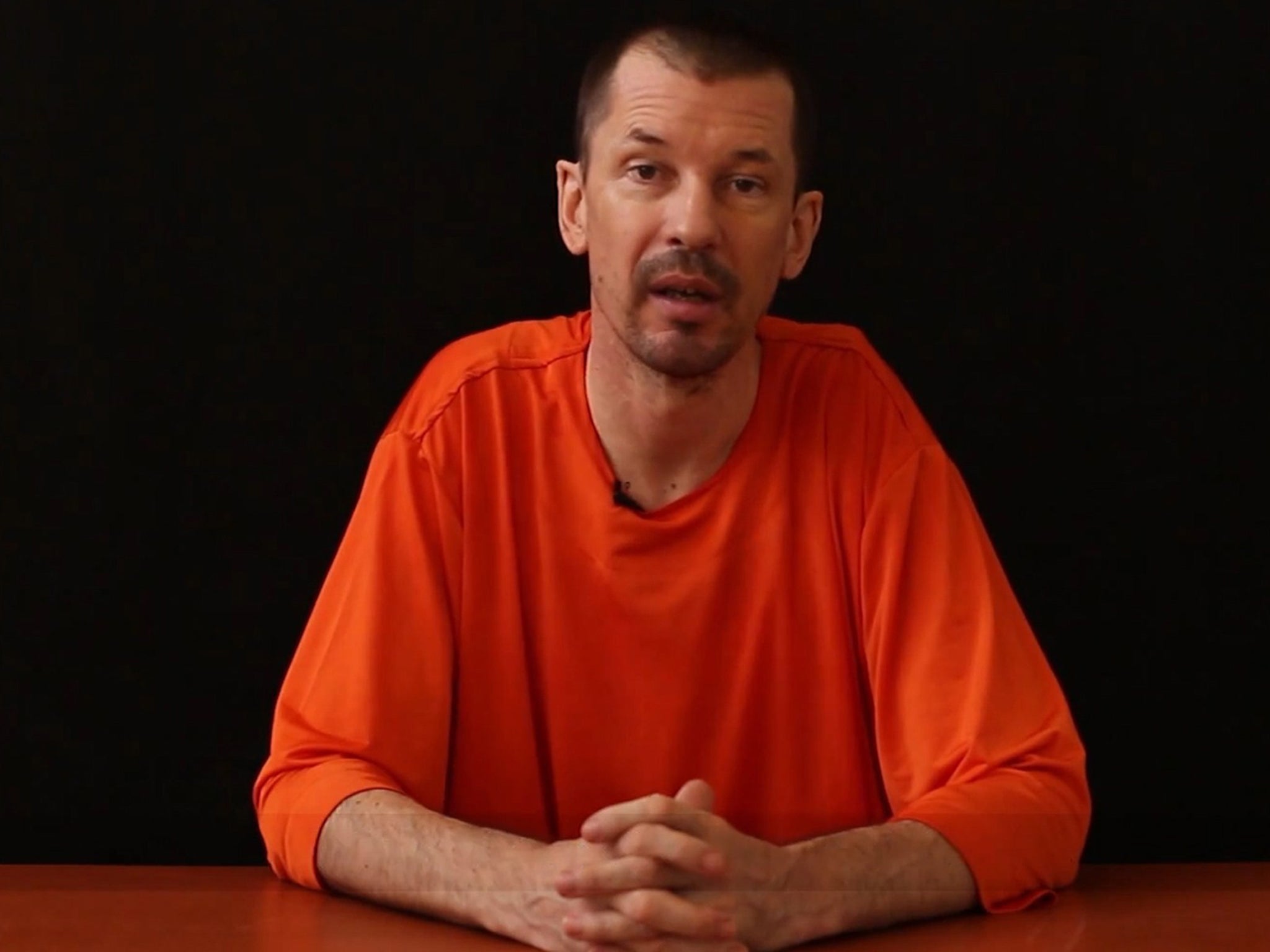John Cantlie: Isis video shows British hostage was probably anxious and reading a script under duress, says voice expert
Islamic State captive appeared in a YouTube video earlier today

A voice expert has said that the British hostage who appears in the latest Islamic State (Isis) propaganda video is anxious and trying to distance himself from what he said in the footage.
The footage of British photojournalist John Cantlie, which was released on YouTube earlier today, shows him sitting against a black background and calling for the US and British governments to change their policies on hostage-taking and not to intervene in Iraq or Syria.
Elizabeth McClelland, a forensic voice analyst, said that certain vocal ticks he made suggested he was anxious, and was probably reading from a script - which might imply he was making the statement under duress.
She said: "He is clearly reading from a script, probably one that he has rehearsed as can deduced from the absence of pause and hesitation markers - sounds usually written as "erm" or "um" - and the fact that the speech contains no repetitions or dysfluencies [breaks that occur during natural speech patterns]."
She added: "The articulation and lip postures align very closely with the spoken utterance, including the points when the speaker produces sounds known phonetically as 'ingressive clicks'. These sounds are sometimes indicators of anxiety in a speaker, as is swallowing, which was also noted in the utterance."
What's more, she said, Mr Cantlie was almost certainly acting.
"The speech and language-use of the hostage exhibited features that strongly indicated that he was acting, that he was using language that was not authentically his own," she said.
"This was evidenced by the way his discourse was organised, patterns of intonation and rhythmic features. His facial expression throughout appeared to indicate that he wished to disassociate himself from the words he was speaking."
Join our commenting forum
Join thought-provoking conversations, follow other Independent readers and see their replies
Comments